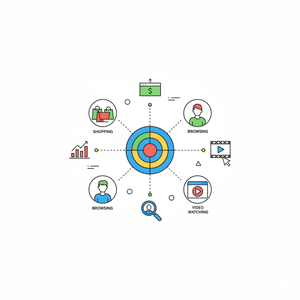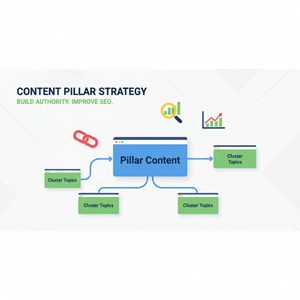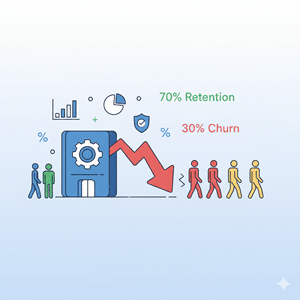What is Behavioral Targeting?
Using information about a user’s online activities, including pages visited, time spent, clicks, searches, and past purchases, behavioral targeting is a digital advertising technique that shows tailored advertisements that align with the user’s interests or intent to buy.
Behavioral targeting is based on user behavior on the internet, as opposed to contextual targeting, which matches ads based on website content.

Why Behavioral Targeting Matters
- Increases interaction by displaying advertisements according to real interests.
- Reaches users when they are most likely to take action, increasing conversion rates.
- Eliminates ad waste by removing users who are uninterested or unfit.
- Improves the client experience by providing more timely and pertinent offers.
- Facilitates sophisticated audience segmentation and retargeting
How Behavioral Targeting Works
1. Data Collection
Cookies, tracking pixels, analytics software, CRM systems, and third-party data providers are some of the ways that user data is gathered.
2. User Profiling
Audience profiles or segments are created by analyzing browsing patterns and behavior.
3. Ad Delivery
Based on the user’s profile and behavior, programmatic platforms or ad networks deliver personalized advertisements.
4. Real-Time Optimization
For improved results, machine learning modifies ad placements, timing, and creatives.
Types of Behavioral Targeting
- Onsite Targeting – Shows offers based on behavior within your own site (e.g., product views, cart additions)
- Retargeting/Remarketing – Focuses on visitors to your website who have already left without making a purchase.
- Lookalike Targeting – Attracts new users who exhibit traits in common with your valuable clients.
- Predictive Targeting – Predicts future behavior using AI and adjusts messaging accordingly.
How SEO Agency Boston Implements Behavioral Targeting
We help brands:
- Establish user consent and tracking procedures that respect privacy.
- Create detailed audience segments with first- and third-party data, then start effective remarketing campaigns.
- Customize advertisements for social media, search, and display networks.
- Targeting rules should be continuously improved based on performance insights.
We make your ads smarter, whether your objective is e-commerce sales or lead generation.
Best Practices of Behavioral Targeting
- Use a variety of signals, such as page views, search queries, cart behavior, and device usage.
- Regularly update creatives to prevent “ad fatigue.”
- Observe privacy laws (CCPA, GDPR) and make sure opt-in tracking is in place.
- Avoid being overbearing and strike a balance between personalization and user experience.
- To gauge the effectiveness of behavior-driven tactics, use A/B testing.
Related Terms
- Retargeting
- Predictive Analytics
- Ad Personalization
- Customer Segmentation
- Dynamic Ads
Common FAQs About Behavioral Targeting
Yes, as long as it’s done openly and with user permission. Offering control and protecting privacy are crucial.
CRM platforms such as HubSpot, Google Ads, Facebook Ads, LinkedIn, and programmatic DSPs (Demand-Side Platforms).
Indeed. As alternatives to cookies, new techniques like contextual AI, device IDs, and server-side tracking are becoming popular.

Make Every Ad Count
Behavioral targeting becomes more than just data when done with SEO Agency Boston; it becomes powerful storytelling that is presented at the ideal moment. When it counts most, deliver the right message to the right users.






